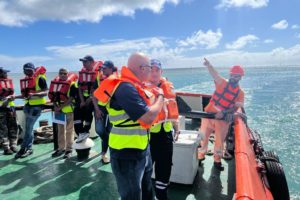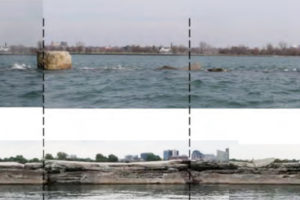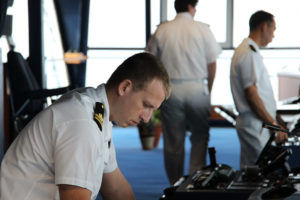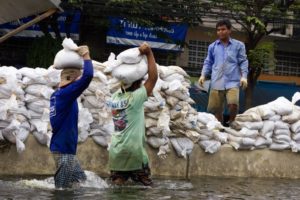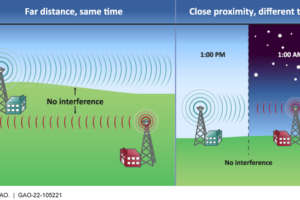
Day-to-day life depends on infrastructure and its services, this includes supply-chains, electricity, water and sanitation, and information networks. But in the face of the COVID-19 pandemic and increasing extreme weather events, these systems are under increasing threat.
A single event in December 2020, Cyclone Yasa, caused around USD 1.4 billion in damage to health facilities, homes, schools and other critical infrastructure in the Pacific island nation of Fiji. Beyond the economic toll, there was immeasurable disruption to people’s lives as a result of downed systems, extending the duration of the disaster beyond the passing of the cyclone.
Vital services for people and communities
Measuring the resilience of infrastructure is a challenge: There is no common understanding of what “resilient infrastructure” means, nor agreed benchmarks against which to gauge infrastructure resilience. Infrastructure is commonly understood as comprising assets and buildings; this needs to shift to include the vital services they provide.
“Social resilience touches on the capacity for a community to adapt, a resilient community is able to respond to changes, post-stress, in a positive way,” said Esther Anyakun Davinia, Uganda’s Minister of State for Relief, Disaster Preparedness and Refugees, speaking at a 7th Global Platform for Disaster Risk Reduction session titled, ‘Building a better future: Investing in resilient infrastructure for all’.
Moving towards net resilience gain
The Principles for Resilient Infrastructure – developed by the United Nations Office for Disaster Risk Reduction (UNDRR) to support the implementation of the Sendai Framework and the Sustainable Development Goals (SDGs) – describe a set of principles, key actions, and guidelines to create national-scale net resilience gain, and improve the continuity of critical services.
“We need a framework – such as we have for net zero," said panellist Rob Wesseling, CEO of The Co-operators Group, a Canadian insurance company. “There were no net-zero alliances not too long ago. There is already an excess of $130 trillion committed to various aspects of net zero which can be used to improve resiliency.”
Investing in sound infrastructure, Wesseling argued, would pay out in resilience dividends.
The net resilience gain approach requires that infrastructure investments enhance resilience and not create any additional risks.
The six interconnected Principles are designed to guide infrastructure stakeholders and leaders in building infrastructure resilience, calling for a process that is continuously learning, proactively protected, environmentally integrated, socially engaged, adaptively transforming, and based on shared responsibility.
The implementation process itself will give users a better understanding of their existing infrastructure systems: their performance, exposure, regulatory environment, challenges and barriers, as well as offering entry points for better risk-informed decision making and investments.
“Short cuts lead to greater costs, so maintenance needs to be integrated,” said Dena Assaf, United Nations Resident Coordinator for the United Arab Emirates. “How the infrastructure systems are maintained and integrated must be informed by the Principles for Resilient Infrastructure.”
A stress test to measure policy impacts on infrastructure resilience
“Infrastructure stress testing helps governments and stakeholders to base policy decisions and investments on factual and up-to-date information on the status of the resilience of infrastructure systems."
- Beata Janowczyk
Regulations that govern critical infrastructure also need strengthening. Governments must revisit their mechanisms and practices to evaluate whether they can cope with increasing requirements brought about by climate change, shifting demographic and development patterns, and other stresses.
Understanding the risk landscape – and its potential impacts on public finances – provides a good basis for realistic assessments of the costs and benefits of financing and policy options.
UNDRR’s recently developed Resilient Infrastructure Stress Test helps policymakers to see how policy changes could impact critical infrastructure, exposing major gaps to be prioritized. The stress test measures infrastructure performance against various stressors, and offers an assessment to provide specific policy recommendations.
“Infrastructure stress testing helps governments and stakeholders to base policy decisions and investments on factual and up-to-date information on the status of the resilience of infrastructure systems,” said Beata Janowczyk, head of the Risk Assessment and Emergency Planning Unit in Poland’s Centre for Security.
With significant recovery funding investments being made in new infrastructure, risk reduction and resilience must be central considerations shaping how and where these resources are spent.



